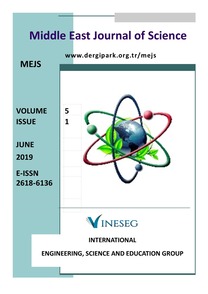THE EFFECT OF DIFFERENT HORMONE CONCENTRATIONS ON CALLUS FORMATION IN COTTON ANTHERS
THE EFFECT OF DIFFERENT HORMONE CONCENTRATIONS ON CALLUS FORMATION IN COTTON ANTHERS
___
- Memon, S., S.N. Mari, A.K. Mari and N.H. Gaddi. 2010. Induction of callus through anther and ovule culture in upland Cotton (Gossypium hirsutum L.). World Applied Sciences, (Special Issue of Biotechnology & Genetic Engineering), 8: 76-79 QBrubaker C. L., ve ark., 1999. The origin and domestication of cotton. (C.W. SMITH, J.T. COTHREN editors) Cotton: Origin, History, Technology, and Production. John Wiley and Sons, Inc., New York, Page: 3-31. Murashige, T., Skoog, F., 1962. A revised medium for rapid growth and bioassays with tobacco tissue cultures. Physiol. Plantarum 15: 473–497. Ellıaltıoglu, S., Sarı, N., Abak, K. 2000. Haploid Plant Production. (Plant Biotechnology Vol I, Ed: Babaoğlu M. Ozcan, S., Gurel, E.) 40 p. Davidonis, G.H. and R.H. Hamilton, 1983. Plant regeneration from callus tissue of Gossypium hirsutum L. Plant Sci. Lett., 32: 89-93. Khanna, H.K. and S.K. Raina, 1998. Genotype x culture media interaction effects on regeneration response of three indica cultivars. Plant cell, Tissue and Organ Culture , 52: 145-153. Jayashanker, R.W., R.G. Dani, S.A. Aripkjanov and A.K.E. Ergashev, 1991. Studies on Thidiazuron mediated in vitro callus induction in Asiatic cottons Adv. Pl. Sci., 4(1):138-142. Beasley, C.A. and Ting, I.P., 1973. The effects of plant growth substances on in vitro fiber development from fertilized cotton ovules. Am. J. Bot., 60: 130-139.
- ISSN: 2618-6136
- Yayın Aralığı: 2
- Başlangıç: 2015
- Yayıncı: -
EVALUATION OF DIYARBAKIR GAZI STREET SOUND ENVIRONMENT PERCEPTION BY SOUNDSCAPE APPROACH
Derya Çakır Aydın, Sevtap Yılmaz
A RESEARCH ON FRUIT PRODUCTION POTANTIAL OF MARDIN PROVINCE
SOME SHRUB AND TREE TAXA IN THE GRASSLAND-PASTURE AND NATURAL VEGETATION OF TURKEY
Mehmet BAŞBAĞ, Erdal ÇAÇAN, Mehmet Salih SAYAR, Halil KARAN
ANALYSIS OF CLIMATIC TRENDS IN EVAPORATION FOR CANAKKALE (TURKEY)
THE EFFECT OF DIFFERENT HORMONE CONCENTRATIONS ON CALLUS FORMATION IN COTTON ANTHERS
MEDET KORKUNÇ, Adem BARDAK, Remzi EKİNCİ
EDUCATION CAN BE A RESEARCH SUBJECT TOO, THROUGH SCIENTIFIC TEACHING.
AGROMYZID (DIPTERA) SPECIES AND THEIR PARASITOIDS IN BATMAN PROVINCE, TURKEY
Selime ÖLMEZ BAYHAN, Mehmet KAPLAN, Erol BAYHAN
WATER ABSORPTION AND BIODEGRADATION PROPERTIES OF POTATO WASTE-BASED POLYURETHANE FOAMS
CURRENT SITUATION OF DIYARBAKIR PROVINCE IN TERMS OF CROP PRODUCTION
